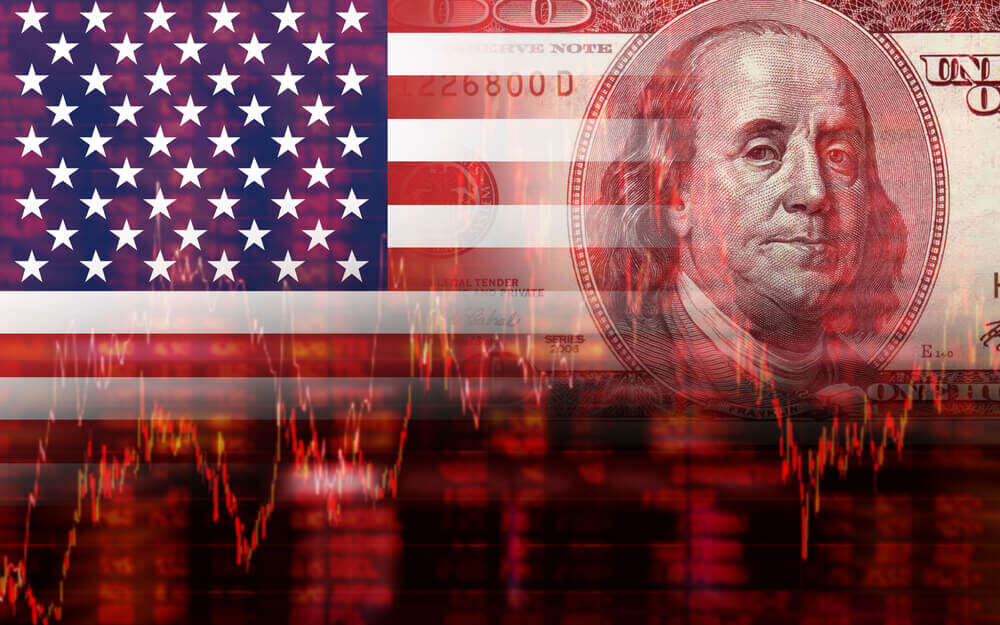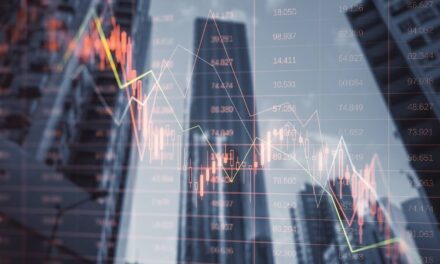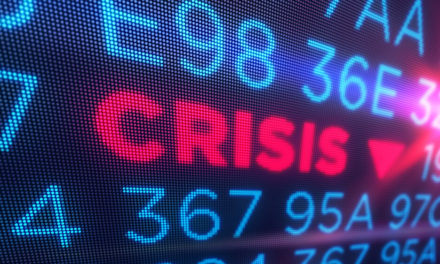America’s economic landscape is becoming littered with one steaming pile after another. The primary offenders include consumer price inflation, interest rates, gross domestic product (GDP) and unemployment. Here we’ll take a sniff of the unpleasant odor that’s wafting around us.
To begin, consumer price inflation is still well above the Federal Reserve’s 2% target. In fact, the Bureau of Labor Statistics reported last week that consumer price inflation, as measured by the consumer price index, is increasing at an annual rate of 4.9%.
And even if you go by the Fed’s preferred inflation metric, the personal consumption expenditures price index, consumer prices are rising at an annual rate of 4.2%. This is still more than double the Fed’s selected target.
So, too, short-term interest rates are relatively high when compared to the last 15 years. By this, when you go from 0% to over 5% in a matter of 18 months the impact on credit markets can be both significant and adverse. As the former managers of Silicon Valley Bank recently discovered, ultra-safe Treasurys can quickly transform into risky assets.
At the same time, the unemployment rate is 3.4%. This is historically low. However, the labor participation rate is just 62.6%. So it muddies the unemployment rate counts. For example, if the labor participation rate was at the level reached at the turn of the 21st century (i.e., 67.3%), the unemployment rate would be much, much higher.
Regardless, the unemployment rate can only go up from here. Now that credit is harder to come by for corporations and consumers, the economy is stalling. Job losses will follow.
Working Harder or Working Smarter
What we already know about the unemployment picture is that there have been massive layoffs in the high-paying technology sector. According to the latest counts from tech job tracker layoffs.fyi, there have been more than 350,000 technology jobs lost since the start of last year.
What’s more, in 2023 alone, not even six months into the New Year, technology companies have laid off nearly 200,000 employees. Some of these unemployed tech workers will presumably pursue new startups. Others will take whatever jobs are available.
Unfortunately, replacing these high-paying tech positions with low-paying service jobs won’t propel economic growth. Nor will the burgeoning nursing home assistant industry.
Spoon feeding creamed corn into senile mouths is a labor of love; and it should be celebrated. But it won’t help America compete globally in cutting edge — and more profitable — industries.
Finally, let’s consider economic growth. The Commerce Department recently reported that U.S. GDP increased at an annualized rate of 1.1% during Q1 2023. That’s hardly a horsehair of growth.
Yet for American workers, the economy’s already been in decline for two long years. Specifically, inflation adjusted wages have been falling over this time. This means American workers have been taking a pay cut, every month, for the last 24 months. Working harder or working smarter hasn’t paid off.
The economy, at this point, is likely already contracting. We just won’t officially know it until second-quarter GDP is reported in July. By then, the confirmation will be a footnote on what is lining up to be one brutal summer.
Misleading Graphs
So, based on this cursory review, what we see is an economy that’s slowing and slipping into reverse. Where unemployment is rising. Where consumer price inflation is persistently high. And where interest rates remain relatively high.
Roughly 45 years ago this situation also occurred. And it wasn’t pleasant. While today isn’t totally identical. There are similarities. This is especially true when considering the confusion these conditions produced for central planners and policy makers.
If you recall, the supposedly impossible happened in the late-1970s. Inflation and unemployment simultaneously went vertical. Leading economists were stumped. They claimed this could never happen. It contradicted their academic training.
The Phillips curve said there’s an inverse relationship between inflation and unemployment. When unemployment goes down, inflation goes up. Thus, when unemployment goes up, inflation goes down.
Economist William Phillips first sketched his curve using wage rates and unemployment data in the U.K. in the years 1861 to 1957. The plot of explicable order was exciting. With a simple graph, economists could explain how the world worked.
Happy cows are in clover. Mud don’t blow. What goes around comes around. Inflation and unemployment are inversely correlated.
The Phillips curve also had significant utility. It provided an economic model central planners could use to somehow optimize inflation and unemployment rates through economic intervention.
The dream of scientific management of the economy was, indeed, possible. Or, at least, it was thought to be.
So, how could it be, in the late-1970s, that both inflation and unemployment went up in tandem? According to the Phillips curve they were mutually exclusive. The graphs shown in economic textbooks said so.
Circa: Now!
In practice, the Phillips curve was elegant drivel. And like most elegant drivel, it was right until the precise moment it was wrong.
When unemployment began creeping up in the 1970s the U.S. Treasury, with backing from the Federal Reserve, did what Keynes had told them to do. They ran deficits to stimulate the economy and spur jobs creation.
Per the tenets of the Phillips curve, with rising unemployment the central planners could have their cake and eat it too. They could print money without price inflation.
Yet something entirely unexpected happened. Instead of jobs … they got inflation. Then, when they tried it again, they still didn’t get jobs. Rather, they got more price inflation.
Phillips’ study will forever stand as a shining example for why economic theory cannot possibly be derived from empirical data. The 1970s experience took its deliberate curves and twisted them inside out.
The 1970s episode of rising inflation and high unemployment also demonstrated the economy is hardly predictable. One decade people borrow money and spend it. The next, they save and pay down debt. No graphical curve can predict what way people’s behavior will swing from one period to the next.
Moreover, any pre-1971 dataset used to discern a relationship between inflation and unemployment was rendered useless once the last vestiges of gold were removed from the monetary system.
Logically, when the unemployment rate goes up the economy sinks. But when the unemployment rate goes down, shouldn’t the economy go back up? Not always.
From January 2010 to January 2020 the U.S. unemployment rate slid from 9.8% to 3.5%. But the economic boom over this time was hardly a boom at all. GDP growth was lethargic — averaging 2.3% over the entire decade.
And now, circa 2023, with low unemployment that can only move higher, a stagnating economy, persistently high inflation and relatively high interest rates, what’s a lowly Fed Chair, with pre-tax income of $190,000 per year, to do?
All options are terrible. But remember, this is a mess that’s entirely of the Fed’s and Washington’s making. In this regard, you can count on the Fed to make things worse.
That’s what it’s good at. That’s what it shall do.
[Editor’s note: Like this article? If so, please Subscribe to the Economic Prism.]




